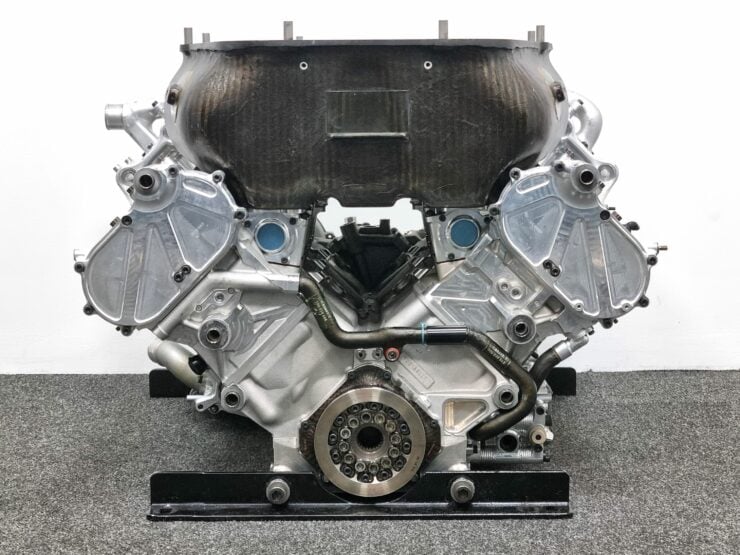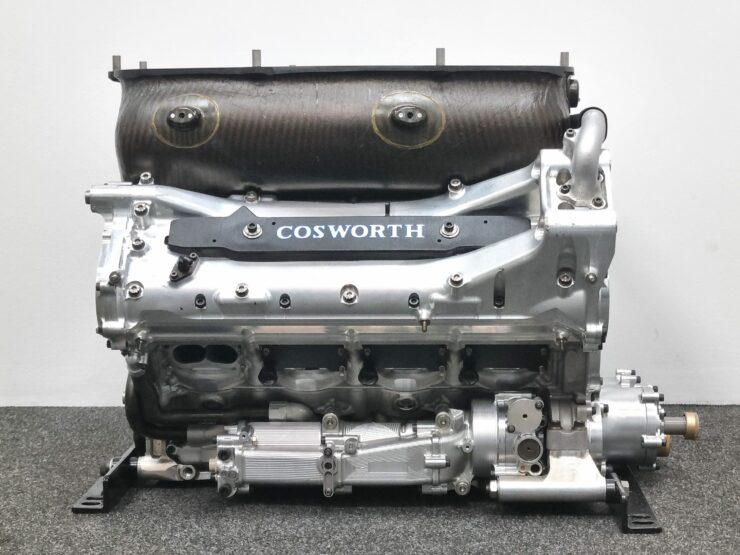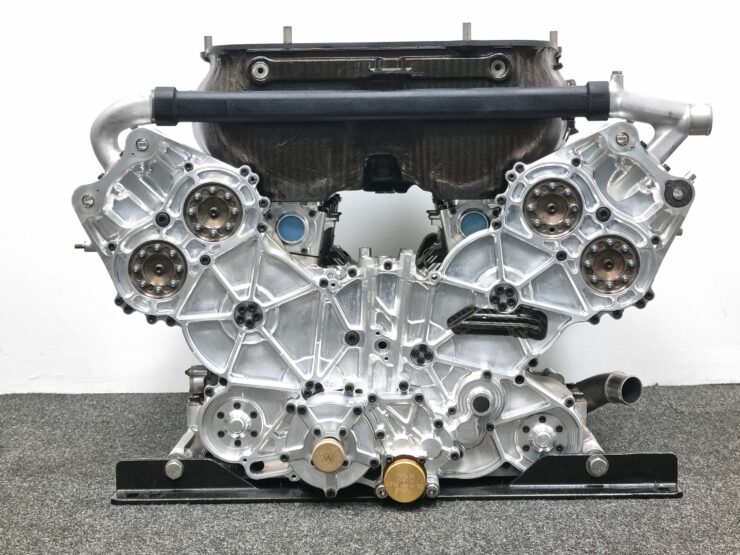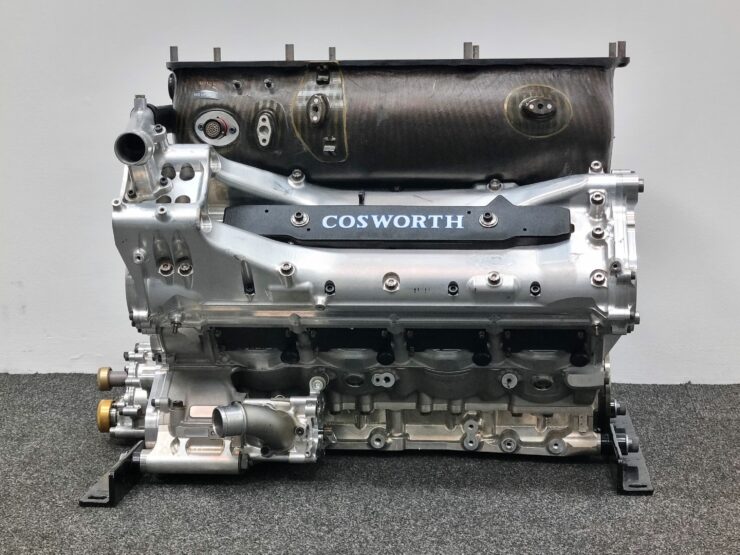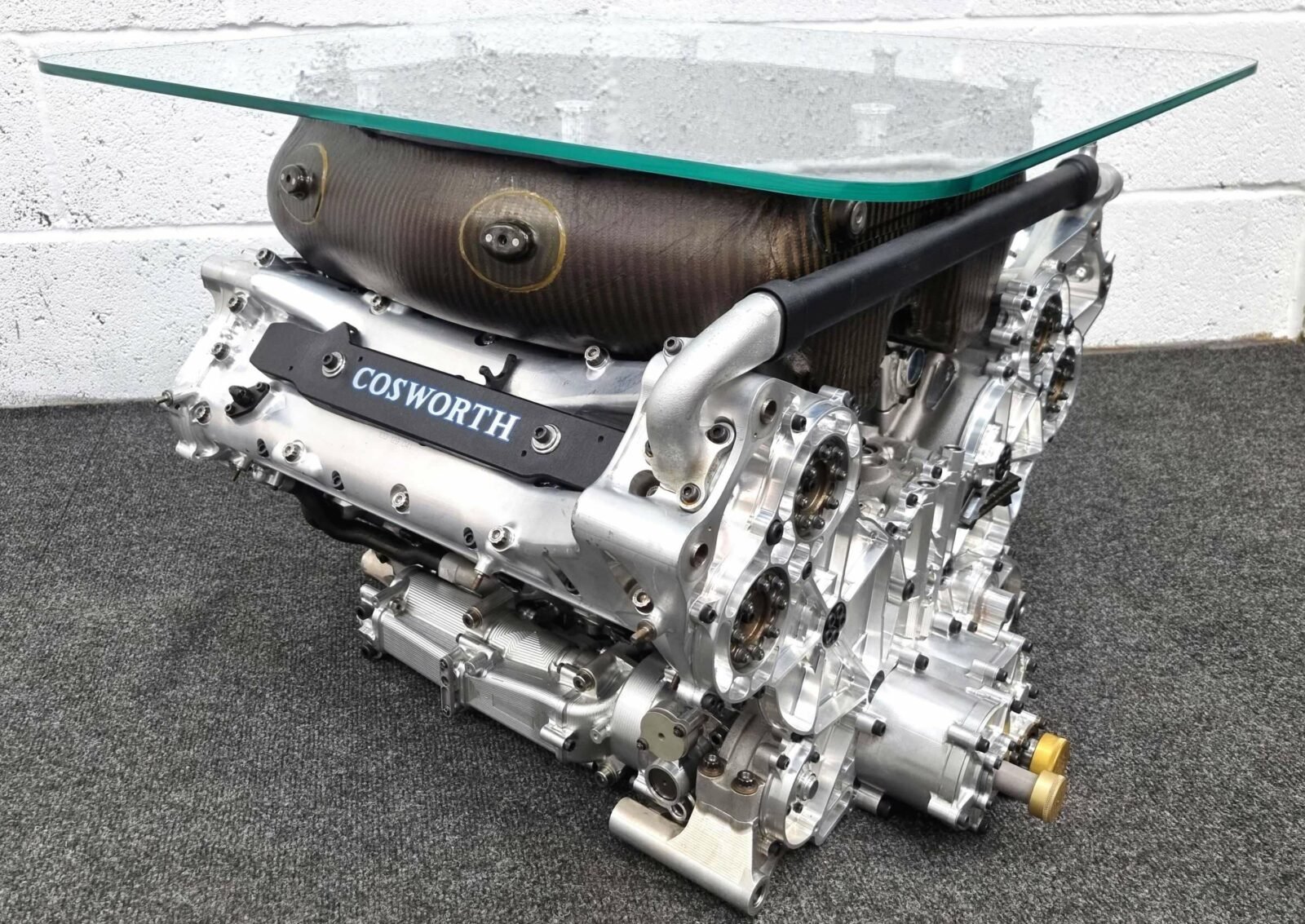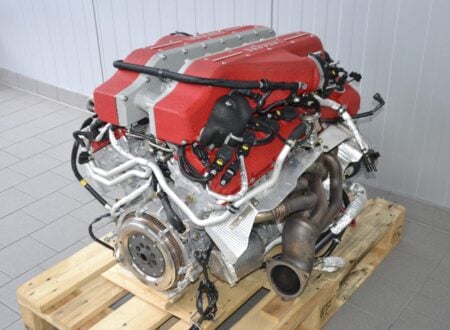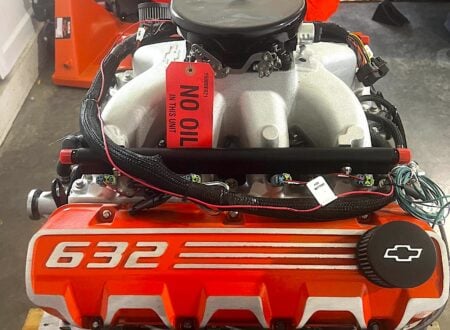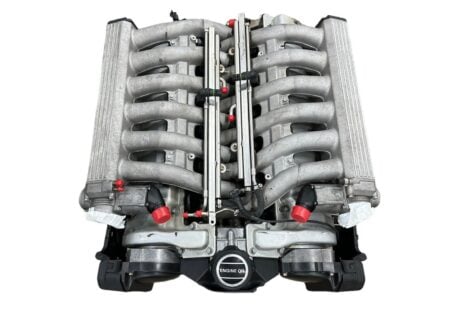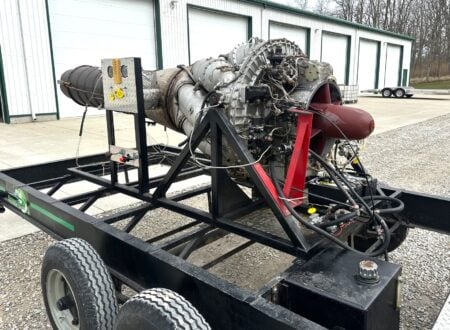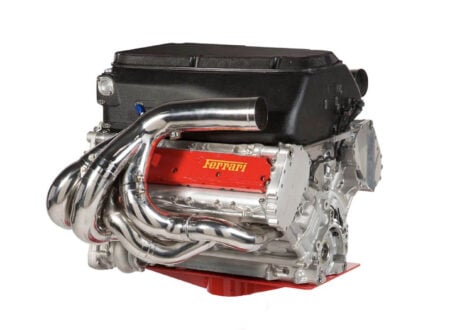This is a Cosworth CA, or more specifically a CA2010, that was built to the specification used by the Williams Formula One Team during the 2010 F1 season.
The Cosworth CA was a remarkable engine by any measure, it was capable of revving to speeds in excess of 20,000 rpm in unrestricted form which resulted in the FIA instituting a 19,000 rpm mandatory rev limiter on all engines.
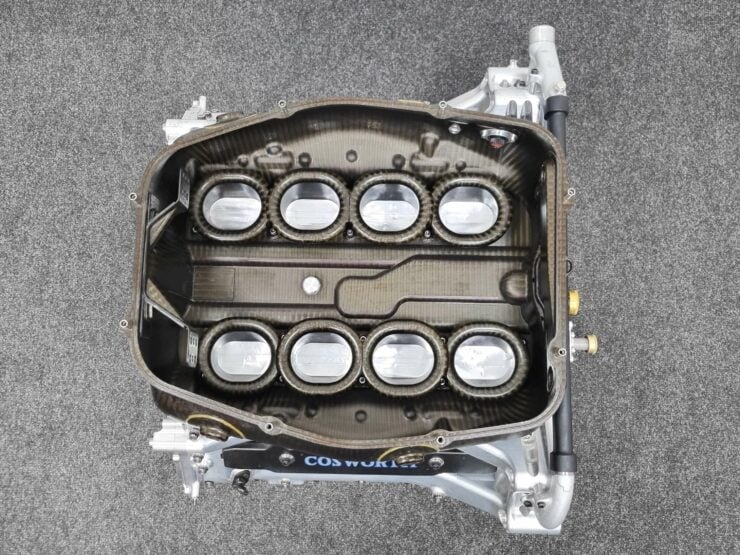

The CA2010 was the 2010 version of the engine, it’s a 90º 2.4 liter V8 with four valves per cylinder that are operated by a high-pressure pneumatic system – the only reason the engine was able to surpass 20,000 rpm without valve float becoming an issue.
Amazingly at speeds above 20,000 rpm each piston experiences 10,616 Gs and the load on each crank pin reaches 5,937 kilograms (13,089 pounds).
The Cosworth CA engine was racing in Formula 1 between 2005 and 2013, it was used by a variety of teams including Red Bull, Toro Rosso, Williams, Lotus, HRT, Virgin, Minardi, and Marussia – it was the first engine to power the Red Bull team who took over from the remnants of Jaguar in 2004.
The engine you see here has been turned into a display piece, there is an optional toughened glass top with bonded spacers that means it can be used as a coffee table if you so wish. It comes on transport bars and Modatek, the company selling it, notes that it will be supplied in a robust and secure freight case.
The engine measures in at 63cm long, 67 cm high, 48cm wide, and it weighs in at an estimated 60 kilograms, which works out to 24.8 inches long, 26.4 inches high, 18.9 inches wide, and an estimated 132.3 pounds.
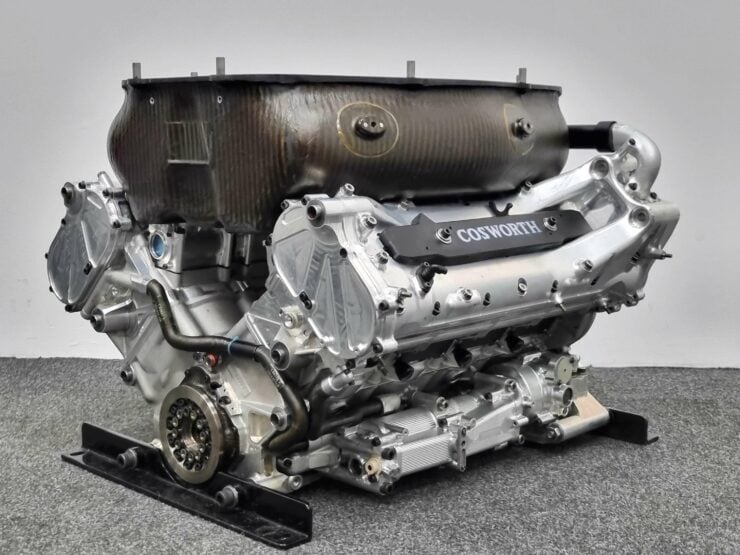

It’s important to note that while the engine has components like the crankcase, cylinder heads, trumpet tray, oil pump, water pump, scavenge pump, cam covers, and water outlets in place, it no longer has any internal moving parts.
